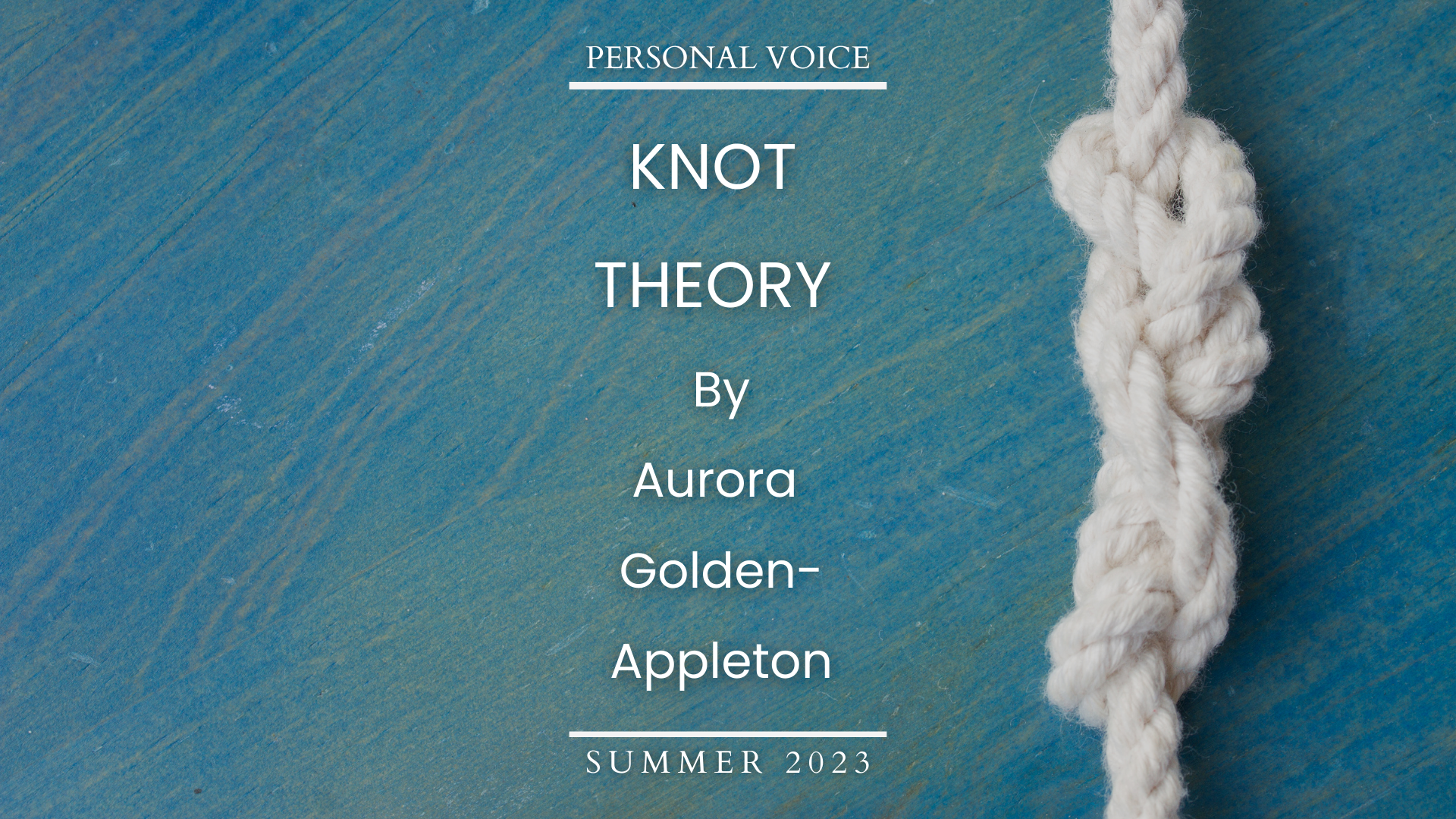Articles/Essays – Volume 56, No. 2
Knot Theory
A knot can be a beautiful thing. A knot can reveal truths about how the world works. Some people are so enraptured by knots, they dedicate their lives to studying them.
I’m devoting no energy to the mathematical grandeur of knots as I pull a brush through my bedraggled hair in quick strokes. There’s not enough light to imagine much of anything at 4:00 a.m., when I awaken for work. My hair goes into a simple ponytail, and a stretchy headband holds everything in place. Any glimmer of aesthetic creativity is decisively stifled by the knowledge that I’ll soon be donning a rather unfashionable N95 mask for thirteen hours.
I pull the front door closed, hit shuffle on today’s Taylor Swift playlist, and wend a solitary two-mile sidewalk route to my hospital flush with the Wasatch Mountains. A novel virus emerged in a bustling port a world away two months before my seventeenth birthday, and now I’m here at 5:21 on a Saturday morning. Life comes at you fast.
A month ago, you were probably waking up to make breakfast for your three kids. Two weeks ago, you arrived here, with tubes galore snaking around your bed to pump medicines into your blood and blow oxygen into your flared nostrils. Last week, the doctor held your husband on the phone as your oxygen levels dropped lower and lower, a nurse silenced the alarm that’s been ringing in her head for the last ten months, and they inserted a tube down your throat to help you breathe.
Today, a team of six of us crowded into your room, where you were lying face down on the plastic mattress, positioned to relieve the pressure on your inflamed lungs. We packed sheets onto your body before counting to three and moving fluidly to flip you to your back for a few hours of respite from “adult tummy time.”
The respiratory therapist hit “Three!” and that’s when we met. I didn’t want to, but I winced. Bloated and twisted—there’s still something so viscerally shocking to me about seeing the face of a really, really sick human being. Your face.
You have a team of world-class clinicians who will titrate your medicines and do the work for and in behalf of your lungs. And a family who will skip breakfast, lunch, and dinner today as a collective demonstration of their faith and love for you. What I am here to share with you is my time. My job right now is detangling deaconess, at one with the standard-issue plastic comb I grabbed from the supply room before suiting up and entering your world.
And so, a few weeks into your brutally long disease course, I find myself sitting on a stool at your bedside, talking to you as I comb through your tangled ICU crown. I start at the bottom and work upward in sections, wetting your hair with detangler and teasing apart knot after knot.
In mathematics, we talk about knots as a kind of closed loop, two ends married together and rendered inseparable. Unlike a tied shoelace, by definition, these knots can’t be undone.
But to be connected to other people so deeply that we can hold in our hands another’s life, or find our own destiny entangled in so many others’—this represents our deepest, most human vulnerability. As we ache for understanding, security, and stability in the midst of this global whirlwind, coworkers, leaders, and friends push back against the political: God works in mysterious ways. Viruses, too. But people? People are predictable, safe, separate. They tell themselves that. We tell ourselves that.
The virus made it here because the world is ineffably connected. You are lying in this bed because we forgot that it is. I meet you with my hands on your head, linking us in a narrative only I will ever write. In seeing you, I commit to restoring that connection.
The miracle that is subsequently enacted will not save your life, but as neat, damp waves of red hair take shape and fall down your shoulders, I can see the life in you.
A knot is described by its number of crossings, and where they occur.
In a different life, we never would have met. But in this one, every tangle I unravel draws our humanity closer.
The nurse slips silently and expertly around your bed, adjusting the drips we hope are keeping you comfortable. Together, we wash your body with warm wipes and drape you in a fresh gown. We exchange a knowing glance that holds as many layers as our protective garb.
I pour your now-smooth hair into a final ponytail. It’s much like the one in the photo your family chooses for the obituary I’ll read in a few weeks’ time.
Some knots can’t be undone. These are the most important kinds.
Note: The Dialogue Foundation provides the web format of this article as a courtesy. There may be unintentional differences from the printed version. For citational and bibliographical purposes, please use the printed version or the PDFs provided online and on JSTOR.


 Back to full Issue
Back to full Issue

